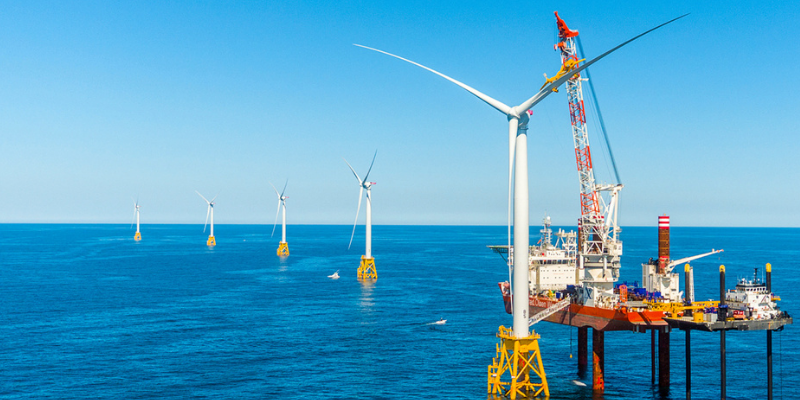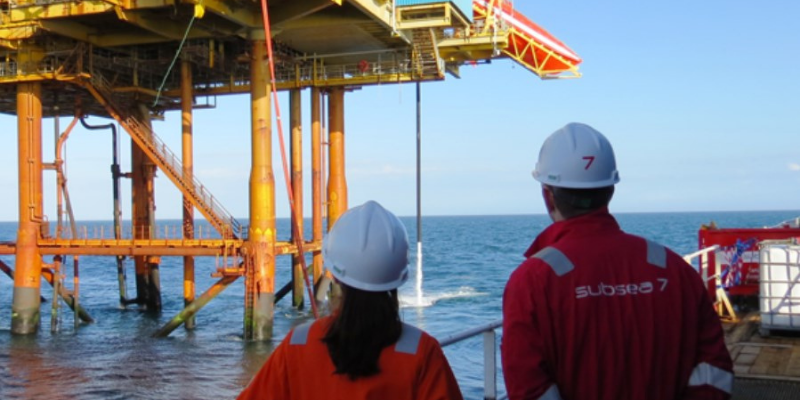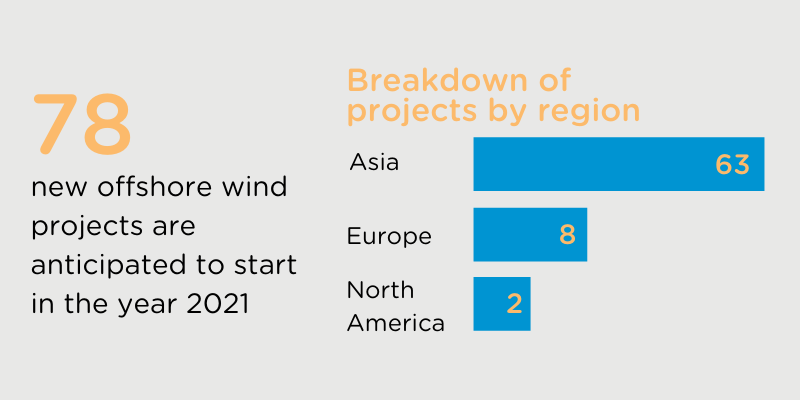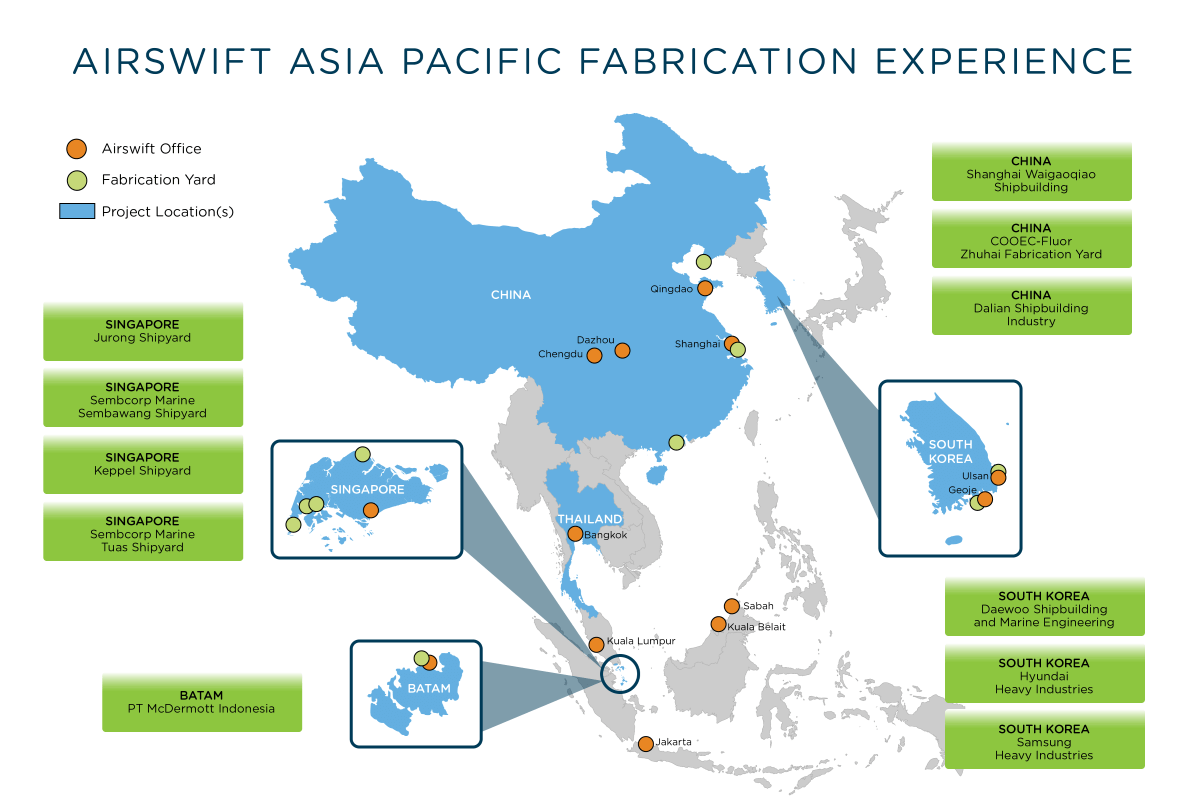By
Moushmi Patel
December 10, 2020
Updated
November 20, 2024
Source: Fokke Baarssen/Shutterstock
The current situation
The offshore wind power industry has seen considerable growth and is projected to grow by an additional 50% by 2025.In recent years, the market for offshore wind has expanded from Europe to Asia, with the latter being accountable for 90% of last year’s offshore wind turbine orders.
This article explores how the offshore wind industry can present plenty of opportunities for talent coming from the oil and gas industry and looks into the transferable skills that can bridge the path.
You can also read our comprehensive lists of major wind projects happening across the globe:
- Ten major offshore wind projects happening in Asia
- Ten European offshore wind projects to watch
- Five US wind energy projects starting in 2020
The impact of Covid-19
As the ongoing pandemic dealt its blows to practically every industry across the globe, one of the industries to have been hit the hardest is oil and gas. As supply began to outweigh demand, oil prices plunged towards an all-time low and forged a path of uncertainly for thousands employed by the industry.
To properly illustrate the severity of the situation, let us consider this. In January 2020, the price of a barrel of crude oil came up to USD$67.05. By March 2020 however, the price had severely dipped to only USD$30 a barrel.
In the UK alone, 43% of employees were made redundant amidst the pandemic and subsequent lockdown while BP reportedly laid-off 10,000 employees in its oil and gas division.
Years of job insecurity coupled with the ongoing volatility of the oil and gas market and the lax regulations that govern it have led many workers to look for opportunities elsewhere.
And with the effects of the coronavirus possibly being the straw that broke the camel’s back, renewables (specifically offshore wind) may just be the answer that they’re looking for.
Challenges faced by the offshore wind industry

Source: Ørsted
Outside of China, the majority of wind projects across Asia are in their embryonic stages. With over 60 projects scheduled to come online before 2024, many clients are now sourcing for the right talent and the industry faces a skill shortage. Notably in the local talent pools.
According to the Global Wind Energy Council (GWEC), more than 77,000 workers will be needed to build almost 31GW of wind farms across emerging markets such as China, South America, Taiwan, Japan, South Korea and Vietnam between 2020 and 2024.
In addition to the skills shortage, movement restrictions brought about by the pandemic have also made it difficult to import foreign talent to help with these projects.
Local Content Requirements (LCR) have also imposed certain barriers on the wind sector. While they can play an important role by creating job-opportunities and uplifting the local economy, overtly rigid LCRs can restrict the supply chain and prevent hiring managers from accessing international talent.
Opportunities in offshore wind for oil and gas candidates
In the past few years, Airswift have seen a large number of oil and gas professionals make the transition over to the offshore wind market due to the alignment of the skills required for both industries.
A recent survey conducted by Campaigners Platform, Friends of the Earth Scotland and Greenpeace UK found that four out of five workers in the UK want to transition from the oil and gas industry. And 53% have expressed interest in joining the offshore wind sector.
Though this practice is uncommon in regions like Asia for example, due to how young the offshore wind sector is. In comparison, there is plenty of untapped potential and now is the time to change this.
One of the greatest challenges yet to face the industry will be sourcing the right expertise to design and build the necessary structures. Especially when all the projects are executed at the same time or within a 12 to 24 month period.
As we’ve seen in oil and gas this will put a strain on the talent pools both locally and internationally. Especially if clients are only looking for candidates with wind project experience.
What are the transferrable skills from oil and gas to offshore wind?

Source: Subsea7
The list below highlights some of the technical skills native to the oil and gas industry that are in-demand on wind projects.
- Geotechnical Engineering
- Surveying
- Marine Engineering
- Foundation Package Managers
- Fabrication Managers / Superintendents
- Client Site Representatives
- Offshore Construction Specialists
- Offshore HSE Reps
- HSE Site Reps
- QA/QC Professionals – Welding, NDT, Coating
- Installation Managers
- Cable Installation Engineer and Site Representatives
- Subsea Engineers
- Environmental Surveyors
Additionally, many employees from oil and gas also possess select soft skills that are invaluable within offshore wind.
Some of these include:
- Communication skills practised with internal and external stakeholders
- Organisational skills
- Leadership & management skills
- Problem solving skills
- Health & Safety skills
- Teamwork and collaboration skills
- Offshore-relevant behavioural skills
- Cultural Awareness due to overseas postings, notably in Asia
We further identify the top disciplines that have the best opportunities for talent from oil and gas to diversify into the offshore wind market:
| Project management | From managing external technical consultants to overseeing installations, many project managers in oil and gas come with the skills to manage complex offshore projects. |
| Array cables | The manufacturing of array cables in offshore wind involve skills and equipment that are similar to oil and gas umbilical manufacturing. |
| Substation structures | Major one-off designs that are similar in scale to oil and gas projects. |
| Turbine foundations | Utilises the same skillset required for fabrication work on oil and gas structures. |
| Installation support services | Experience of working on offshore projects in oil and gas helps to inform understanding in areas such as subsea services. |
| Maintenance and inspection services | Oil and gas experience in offshore logistics can help shape the evolving strategies in offshore wind. |
What candidates can do to begin their career transition into offshore wind

The offshore wind industry is a very exciting one and it continues to be the focus of the renewables industry. There will be an uptick in project activity leading to the creation of many opportunities for skilled and technical labour from diverse backgrounds.
For oil and gas candidates interested in a career in offshore wind, research and preparation are important steps that must be taken to kickstart the transition.
Identify your niche
Start by asking yourself where you want to work before you begin the job search. There are numerous companies within the offshore wind industry handling the various stages of the project lifecycle from design through to construction, installation to operations. Heighten the chances of utilising your existing skills by identifying the various companies and what each of them specialise in.
Focus on upskilling and getting the necessary certification
From engineering to construction, the skills required on offshore wind projects are often transferable.
Thousands of jobs are being created by the offshore industry and as the talent pool widens many roles will be reserved for those who have the right accreditations such as those with Global Wind Organisations (GWO) training.
Find GWO training providers in locations close to you to learn more about what certificates will strengthen your application.
Explore apprenticeships
In preparation for the increase in demand for talent in offshore wind, many companies have started organising apprenticeship programs schemes in order to upskill and enhance talent development internally.
Seasoned professionals from projects in Europe are now entering Asia to transfer their skills and knowledge and help with apprentice programs and workshops.
For individuals coming from technically related fields such as oil and gas, companies have also started to offer retraining programs to acclimate them to the nature of their new industry.
Do your research
We encourage candidates exploring options in the wind sector to conduct research on the industry and projects in locations they wish to work in.
Airswift have over 25 recruitment consultants globally that candidates can speak with to learn more about our clients, projects and requirements.
Please update and highlight any transferable skills on your resume to make sure that it reflects the relevant experience and qualifications.
Oil and gas companies that have transitioned into offshore wind
The radical diversification of some of these corporations show positive evidence of the synergy between the oil and gas and offshore wind industries.
They illustrate how offshore wind has been able benefit from the expertise and knowledge of the oil and gas supply chain.
On an individual level, they serve as exemplary models of how that same journey can be taken by oil and gas employees looking to transition into offshore wind.
 Ørsted
Ørsted
Formerly known as Danish Oil and Natural Gas (DONG), Ørsted is now one of the biggest renewable energy companies in the world.
They develop, construct and operate both offshore and onshore wind farms in the UK, US, Denmark, Germany, the Netherlands and Taiwan.
 Tekmar
Tekmar
Established in 1985 as an oil and gas diving consultancy, TEKMAR Energy diversified into the offshore wind industry over 20 years ago. Today, they provide subsea cable protection systems with a generating capacity of more than 30 GW.
They are responsible for the protection of thousands of subsea, array and export cables for over 90 projects across Europe, Asia and the US
 Sembmarine SLP
Sembmarine SLP
With over four decades of experience in designing and manufacturing structures for the global oil and gas sector, Sembmarine SLP utilised its expertise in the former to design, develop and fabricate offshore wind substation topsides as well as jacket foundations.
The company are currently partnered with the China Shipbuilding Corporation and the Zhengzhou Institute of Mechanical and Electrical Engineering to cooperate on wind farm substations.
 FoundOcean Limited
FoundOcean Limited
With over 50 years of experience, FoundOcean is the largest offshore grouting company. They have been involved in the oil and gas industry providing services such as foundation grouting as well as repair, maintenance and modification solutions to extend the life of offshore assets.
Today they support both the oil and gas and offshore wind markets on a 50:50 basis. They provide the latter with installation support and asset integrity maintenance.
FoundOcean has been involved with wind farm projects such as the Arklow Bank offshore farm and Ormonde in the Irish Sea.
Wind sector looks to Asia’s fabrication yards

Not only are skill sets from oil and gas in high demand, so are the ones found in fabrication yards These yards in Singapore, Taiwan, South Korea, China, Thailand and Indonesia have traditionally built most of the worlds major oil and gas project assets. These range from FPSOs and offshore platforms to major components sitting in onshore gas plants.
With the uptick in wind projects globally, fabrication and shipyards are now receiving orders to support large packages from foundations for wind turbines to thousands of tonnes of steel required for seabed jackets.
Major electrical module works (E-Houses) are also being awarded to contractors in various yards. Apart from the wind turbines, the similarities in these scopes are almost a carbon copy seen in the oil and gas sector. The skills required are also the same, opening up lots of opportunity for engineering, construction, HSE and quality representatives.
Why should offshore wind companies look to the oil and gas industry to find potential talent?
For the growing offshore wind market, hiring veterans from oil and gas is a means of taking advantage of a seasoned workforce who can deliver the cross-sector expertise that is needed to take the global offshore wind market to new heights.
What Airswift can bring to the table
Here at Airswift, we have extensive experience in working with a diverse portfolio of clients and candidates in both the oil and gas and renewables sector. This includes many candidates who have successfully transitioned over to renewable projects, notably in wind.
We’re ready to help our clients find and place the best talent exactly where they are required.
For over 40 years Airswift have been involved in staffing From Europe to Asia, many of the oil and gas professionals Airswift can assist in mobilising that talent towards the various wind projects that are taking place across the world
We can also bridge the gap between oil and gas professionals from the EU and the UK who are looking to transition into the wind industry. This serves as a fantastic opportunity to leverage on the expertise of a highly skilled and seasoned workforce to propel offshore wind forward in up-and-coming regions.
Once a client or candidate is ready to explore these opportunities, Airswift is able to handle and advise on all the migration issues that come with the territory including immigration and visa support, payroll, relocation, employer of record and more.
Some final food for thought
We would like to conclude this article with a quick summary of key points and recommendations.
Keep an open mind
For the roles that are in demand within the offshore wind sector, many of them already exist within oil and gas.
Hiring managers and decision makers should embrace talent from beyond the offshore wind sector that comes equipped with a diverse skillset and varied work experience.
Think ahead
Over the next 10 to 20 years, the number of projects will increase and the talent pool may become narrower. Developers should focus on building long-term talent pools via apprenticeships and sustainable relationships with candidates and training/recruitment specialists.
Explore new opportunities
For oil and gas employees who have been made redundant due to the volatility of the industry and the additional blow of Covid-19, their skills are highly relevant and of value. They can be moved into new arenas and industries that are recovering quickly.
Focus on skills expansion
To counter the skills shortage, companies can leverage on the wealth of experience from those in oil and gas. Bring in this talent pool to create upskilling programs for local talent, share best practices and facilitate transfer of knowledge.
How can Airswift help?
With over 40 years of experience in the oil and gas and energy industries along with a rich database of people with the relevant experience, Airswift are ready to help you in your journey.
Reach out to us to find about more about our talent acquisition solutions or visit our job board to explore our available opportunities in the renewables sector.
For clients who are interested in finding the right talent, visit our workforce solutions by clicking the button below.

For candidates looking for their next role in the offshore wind industry, register on our candidate portal and start exploring new opportunities with Airswift.

